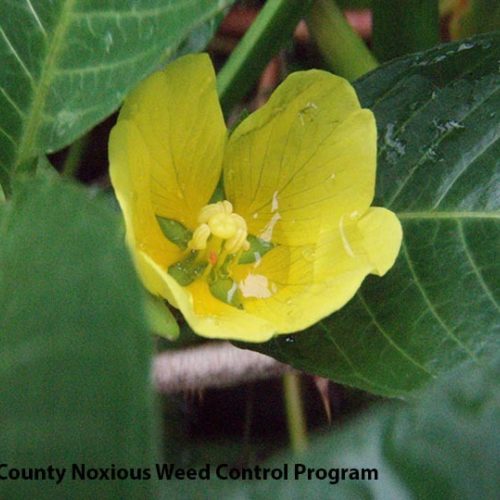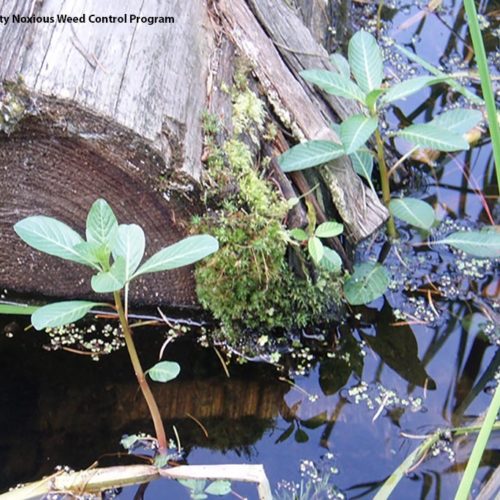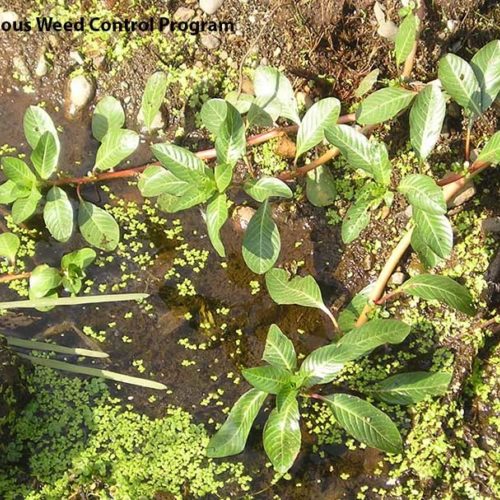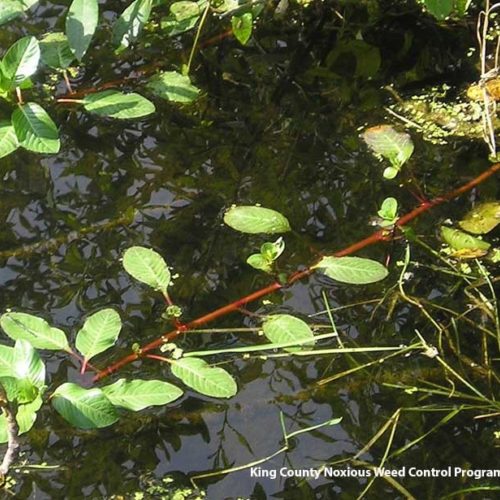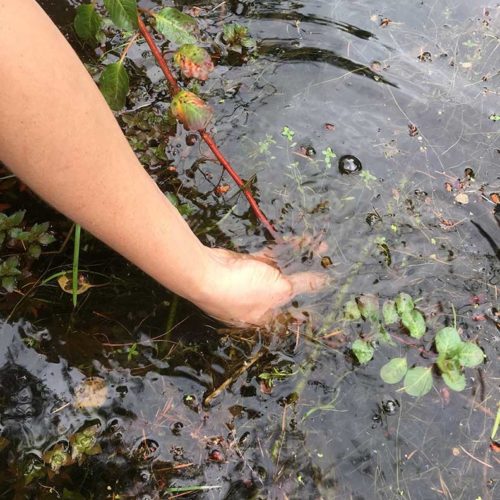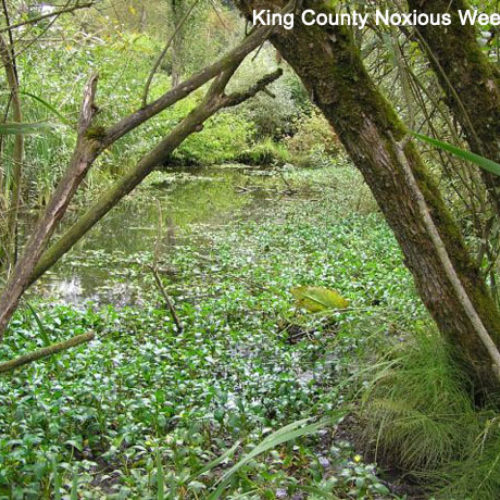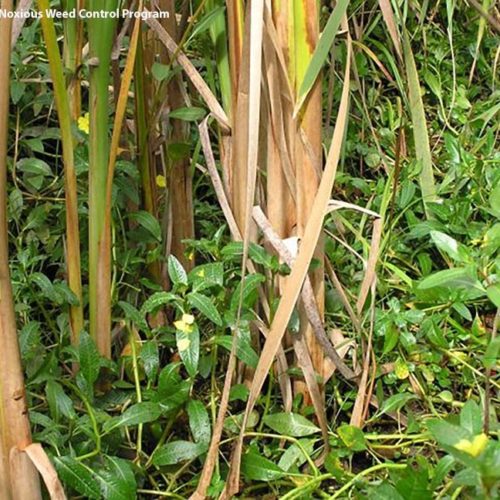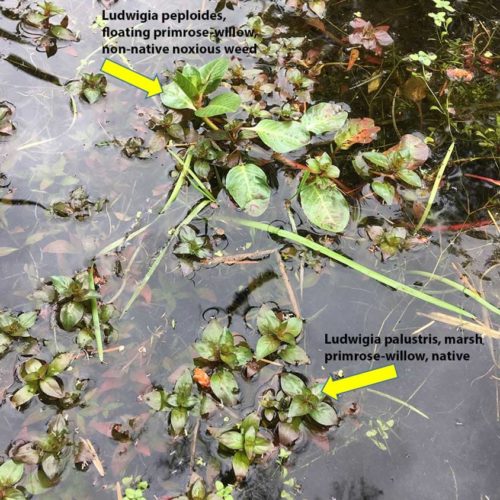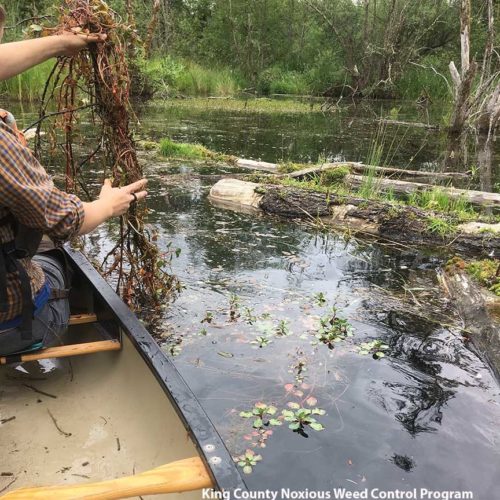Floating Primrose-Willow
Ludwigia peploides
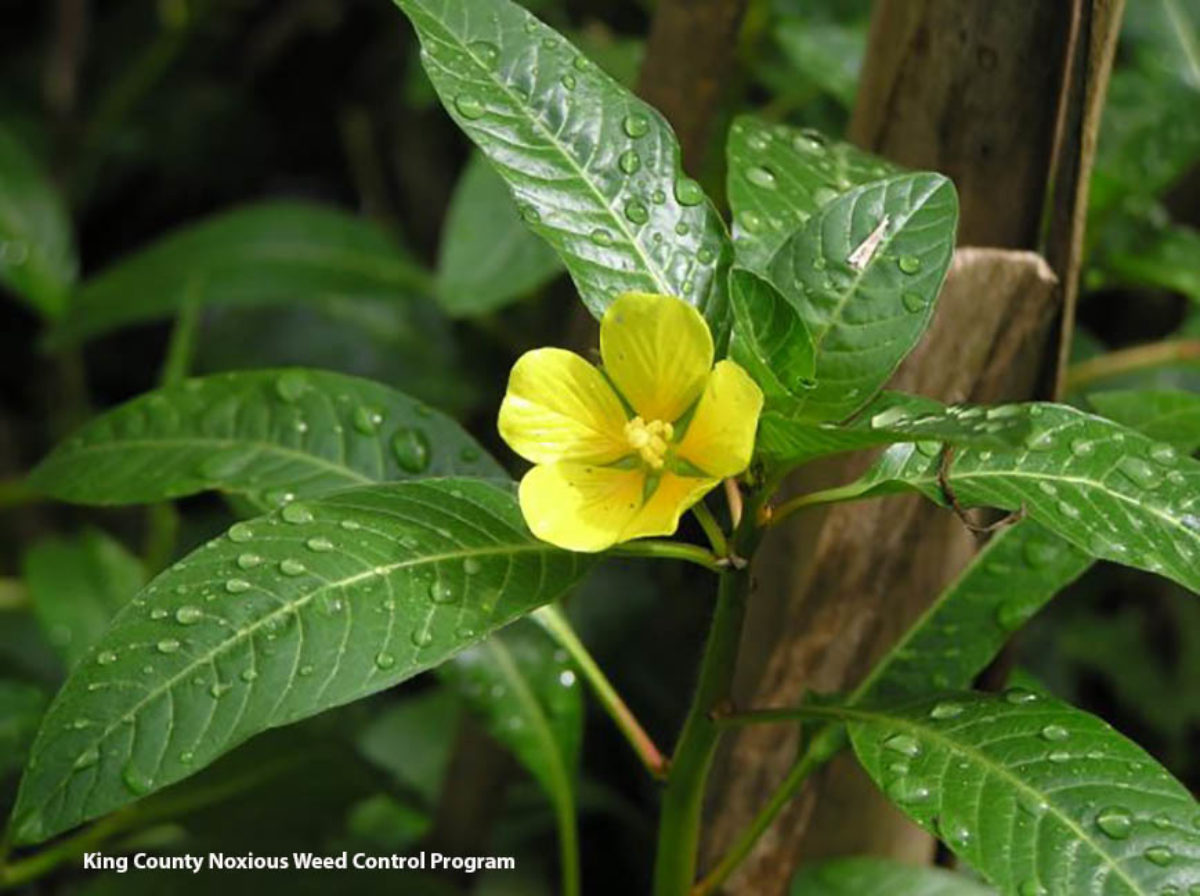
Family: Onagraceae
Other Common Names: creeping water primrose
Weed class: A
Year Listed: 2006
Native to: Regions in South, Central, and North America, including parts of the southeastern US
Is this Weed Toxic?:
not known to be
Legal listings:
This plant is also on the Washington State quarantine list. It is prohibited to transport, buy, sell, offer for sale, or distribute plants or plant parts of quarantined species into or within the state of Washington or to sell, offer for sale, or distribute seed packets of seed, flower seed blends, or wildflower mixes of quarantined species into or within the state of Washington. Please see WAC 16-752 for more information on the quarantine list. For questions about the quarantine list, contact the Washington State Department of Agriculture's Plant Services Program at (360) 902-1874 or email PlantServices@agr.wa.gov.
Why Is It a Noxious Weed?
It forms dense, fast-growing, floating mats that can displace native aquatic plants and wetland grasses. Mats can also lower dissolved oxygen and pH of the water, reduce water quality for wildlife and increase sedimentation.
How would I identify it?
General Description
It is an herbaceous, perennial wetland plant whose sprawling stems usually grow flat along mud or a water surface. Water primrose, Ludwigia hexapetala, a Class B noxious weed in Washington, looks very similar and they can be very difficult to tell apart.
Flower Description
Flowering stems are floating or lying on the ground. Flowers have five bright yellow petals, 0.4 to 0.6 inches (1 to 1.5 cm) long. The flowers occur on long stalks arising from the leaf axils (upper angle of where leaf attaches to stem).
Leaf description
They are alternately arranged, clustered and vary in shape and size. They can be lance-shaped to egg-shaped and are up to about 3.5 inches long. Leaf bases tapers to a stalk that ranges from 1-1.5 inches long. Leaves are hairless and have smooth margins.
Stem description
Sprawling stems can reach a length of 9 feet. Stems are fleshy and either hairless or slightly hairy.
Fruit Seed Description
Capsules contain many small seeds (1mm in size).
May Be Confused With
Water primrose, Ludwigia hexapetala, a Class B noxious weed in Washington, looks very similar, and they can be very difficult to tell apart, even for experts. If you need help with identification, please contact your county noxious weed coordinator.
Where does it grow?
Floating water-primrose grows along freshwater shorelines and sprawls across the water's surface. It typically inhabits margins of lakes, ponds, ditches and streams. It can tolerate water depths up to around 10 feet. Please click here to see a county level distribution map of floating primrose-willow in Washington.
How Does it Reproduce?
Floating water-primrose reproduces mainly through plant fragmentation. When a piece of stem breaks off, it develops roots and will grow into a new plant. It also appears to produce viable seeds.
How Do I Control It?
General Control Strategy
When removing floating primrose-willow, be sure to remove as many plant fragments and roots as possible. Be sure to dispose of plants properly. If you use a method that will kill the plant, keep in mind that the decomposing plant will cause a drop in the dissolved oxygen. Treating only a portion of the floating mat at a time, or removing dying plant tissue will help reduce this risk.
Cultural Control
Small populations may be tarped; however, covering large populations can cause a drop in dissolved oxygen that can affect other plants and fish.
Herbicide Control
Please refer to the PNW Weed Management Handbook, or contact your county noxious weed coordinator.
For More Information
See our Written Findings for more information about creeping waterprimrose (Ludwigia peploides).



